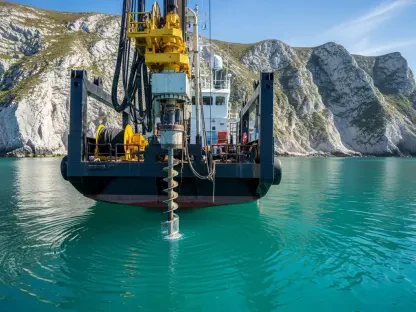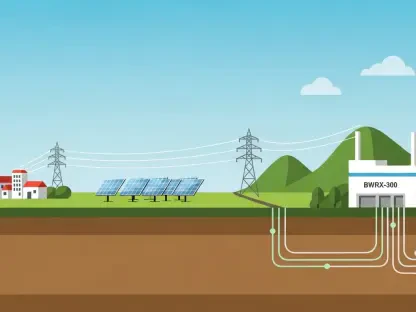I’m thrilled to sit down with Christopher Hailstone, a seasoned expert in energy management and utilities, whose deep knowledge of the energy sector, including renewable energy and grid reliability, offers unique perspectives on the latest developments in oil and gas infrastructure. Today, we’re diving into Chevron’s potential sale of pipeline assets in Colorado’s Denver-Julesburg shale basin, a deal that could exceed $2 billion. Our conversation explores the specifics of these assets, the strategic reasoning behind Chevron’s decision, the financial implications, and the broader context of the U.S. midstream market, shedding light on how this move fits into the company’s overarching goals amidst a dynamic industry landscape.
Can you walk us through the pipeline assets Chevron is considering selling in the Denver-Julesburg shale basin?
Certainly, Silvia. These assets are a significant collection of midstream infrastructure primarily focused on supporting oil and gas operations in the Denver-Julesburg basin, which is mostly in Colorado but also stretches into parts of Wyoming. We’re talking about pipelines and related facilities that handle the transportation and processing of hydrocarbons. Chevron inherited much of this infrastructure through its acquisition of Noble Energy in 2020 and later took full control of Noble’s midstream business. It’s a critical network for one of the largest producers in the region, which makes this potential sale quite noteworthy.
How did Chevron initially come to own these particular assets?
Chevron’s ownership of these assets stems from a strategic move a few years back. In 2020, they acquired Noble Energy, a major player in the Denver-Julesburg basin, and this deal brought a substantial portfolio of upstream and midstream assets under Chevron’s umbrella. A year later, they completed the full takeover of Noble’s midstream operations, consolidating their control over this infrastructure. It was a way to bolster their presence in a key shale region, but now it seems they’re reassessing which pieces of that puzzle best fit their long-term vision.
What’s the financial outlook for these assets in terms of their potential sale value and earnings?
From what’s been reported, these assets are generating around $200 million in annual EBITDA—that’s earnings before interest, taxes, depreciation, and amortization. That’s a solid income stream for midstream infrastructure. As for their sale value, industry sources suggest Chevron could fetch upwards of $2 billion, which aligns with multiples seen in comparable deals. It’s a hefty price tag, reflecting the strategic importance of these assets in a productive basin, though of course, there’s no guarantee a deal will close at that level or at all.
What do you think is driving Chevron’s decision to potentially offload these assets at this moment?
I believe it’s largely about sharpening their financial focus. Chevron is under pressure to optimize its portfolio, especially in an environment where oil price volatility creates uncertainty. They’ve been vocal about wanting to prioritize cash flow and divest assets that might not align with their most profitable opportunities. Selling these midstream assets could free up capital for other investments or help reduce operational costs, especially since maintaining such infrastructure can be capital-intensive. It’s a classic move to streamline and boost financial performance.
How does this potential sale tie into Chevron’s broader corporate strategy and recent business moves?
This sale seems to be part of a larger effort by Chevron to refine its operations. They recently completed a massive $55 billion acquisition of Hess, which was a significant win after a tough legal tussle. That deal expanded their upstream portfolio, particularly in key growth areas. At the same time, they’re undertaking a major cost-cutting initiative, including plans to reduce their global workforce by up to 20%. Divesting these Colorado assets fits into this narrative of shedding non-core or less profitable holdings to focus on high-return prospects and maintain financial discipline.
What can you tell us about the current dynamics in the U.S. midstream market, and how might they influence this deal?
The U.S. midstream sector has been quite active lately, with a wave of deal-making despite various regulatory shifts. Strategic players, like major pipeline operators, have been reengaging in acquisitions after a period of focusing on debt reduction. Meanwhile, private equity firms are also in the mix, eager to snap up assets with stable cash flows. Recent transactions, such as MPLX’s $2.4 billion acquisition of Northwind Midstream, show there’s strong appetite for quality infrastructure. For Chevron, this robust market could mean attracting competitive bids, assuming they proceed with the sale.
Looking at the bigger picture, how do you see the midstream sector evolving in the coming years, and what could that mean for deals like this one?
The midstream sector is at an interesting crossroads. On one hand, there’s a push for energy transition and decarbonization, which might temper long-term investment in traditional oil and gas infrastructure. On the other, domestic production in shale basins remains strong, and the need for reliable transportation and processing capacity isn’t going away anytime soon. I expect we’ll see continued consolidation, with larger players or well-funded private equity groups looking to optimize networks. For deals like Chevron’s, this could mean sustained interest, but buyers will be scrutinizing how these assets fit into a future where energy policies and market demands are shifting.
What’s your forecast for the U.S. midstream market over the next few years, especially in relation to shale basins like Denver-Julesburg?
I think the midstream market will remain a hotbed of activity, particularly in prolific shale basins like Denver-Julesburg. We’re likely to see more strategic mergers and divestitures as companies recalibrate their portfolios to balance growth with sustainability goals. Infrastructure in these regions will continue to be valuable due to ongoing production, but there’s also a growing emphasis on efficiency—think digital upgrades or repurposing assets for alternative fuels. My forecast is cautiously optimistic: while traditional midstream assets will hold value, the winners will be those who can adapt to regulatory changes and energy transition pressures. I’d expect more deals, but with an increasingly discerning set of buyers.









